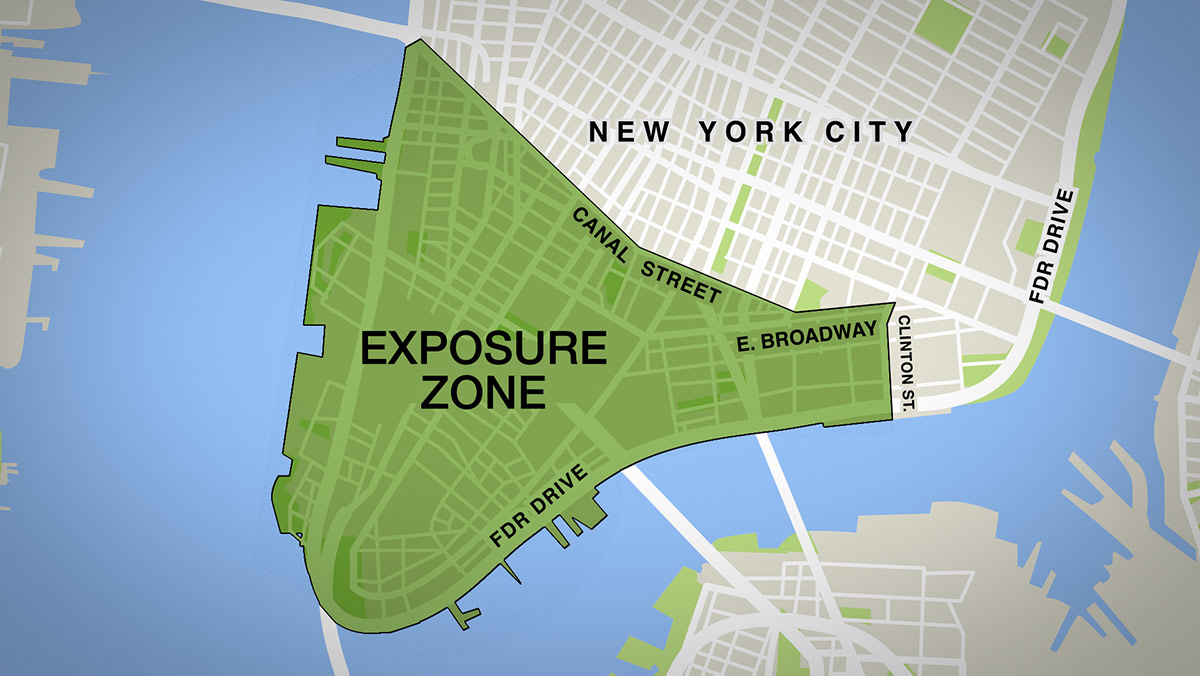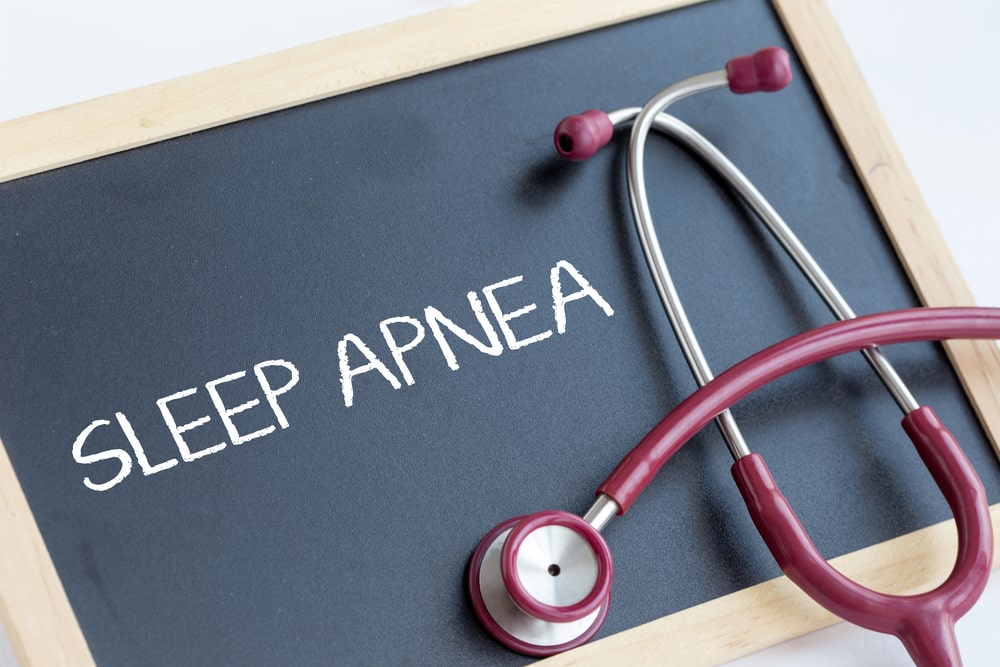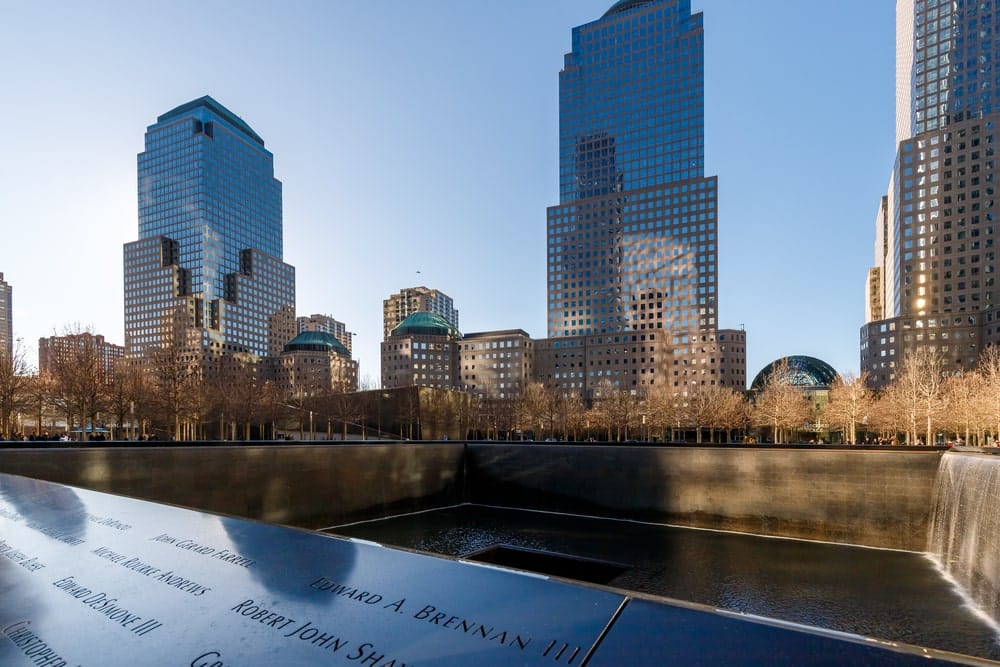The number of illnesses, diseases, and injuries caused by the 9/11 terrorist attack on the World Trade Center is staggering. Close to 3,000 people lost their lives in New York City as a direct result of the attack, and nearly five times that number suffered injuries. In addition, toxic smoke and dust spewed into the atmosphere, carrying with it a wide array of harmful, toxic, and carcinogenic gases and particles.
Dust Exposure from 9/11: Health Effects
An estimated 400,000 people were exposed to toxic dust caused by the collapse of the World Trade Center. According to the World Trade Center Health Program, there were many victims of the highly caustic, contaminated dust.
Among the first adverse effects noted by responders and survivors was the chronic cough known as the WTC Cough Syndrome, with symptoms that include “chronic rhinosinusitis, asthma, and/or bronchitis, often complicated by gastroesophageal reflux dysfunction (GERD).” Up to 70 percent of those involved in rescue, recovery, and cleanup efforts at the WTC site suffer from WTC cough and other respiratory problems.
As of September 2021, there were more than 114,000 people enrolled in the WTC Health Program, including both responders and survivors. The health effects they suffered as a result of the 9/11 attacks range from asthma and COPD to cancer to mental health issues, such as depression, PTSD, and anxiety.
The Danger of the Dust and Fumes
According to an article in the scholarly publication Critical Reviews in Toxicology: “About 80–90% of the settled WTC Dust, ranging in particle size from ∼2.5 mm upward, was a highly alkaline mixture of crushed concrete, gypsum, and synthetic vitreous fibers (SVFs) that was readily resuspendable by physical disturbance and low-velocity air currents.” This is in addition to other dangerous pollutants, such as “asbestos fibers, transition and heavy metals, polyaromatic hydrocarbons or PAHs, and dioxins.”
More than 10 million tons of building material collapsed, sending dust throughout the air in a plume that reached a height of up to 0.93 miles and spread throughout the metro area, carrying with it the causes of many types of 9/11-related lung diseases and conditions.
Because the dust contained an admixture of toxins that are known carcinogens, highly alkaline contaminants, and heavy metals, the number of people who became ill from exposure continues to grow. Those who were present in the NYC Exposure Zone during and in the nine months that followed the attack are at an increased risk for cancer, respiratory problems and other serious medical conditions.
Because 9/11 first responders—including police, firefighters, and emergency personnel as well as others who participated in rescue, recovery, and cleanup—had inadequate personal protection equipment (PPE), if any, they had the highest exposure to the dust cloud. Workers, visitors, residents and others who were in the cloud itself or exposed to the dust that settled in and around Ground Zero are also among those who are at greater risk for 9/11-related medical conditions, including respiratory issues and cancer.
Lung conditions caused by 9 /11 toxic dust
Diseases caused by exposure to asbestos are perhaps the most insidious found among 9/11 responders, workers, residents and others who were in the dust cloud or anywhere within a 1.5-mile radius of ground zero zone. Asbestos was used in the construction of the World Trade Center, primarily for its long-lasting ability to bond well with many materials, giving them added strength and durability. Spray-on asbestos material was applied to the first 40 floors of the WTC until the implementation of stricter regulations caused a halt to its use.
The harmful effects of asbestos have long been known. The Environmental Protection Agency (EPA), along with many other government and health care entities, categorizes asbestos as a carcinogen.
A WTC Health Registry Cohort reports that “dust created by the collapse of the World Trade Center (WTC) towers on 9/11 included metals and toxicants that have been linked to an increased risk of pulmonary fibrosis.” Also called interstitial lung disease, it damages, scars, and thickens lung tissue, making it difficult for the lungs to function properly. Hundreds of people caught in the 9/11 dust cloud have been diagnosed with pulmonary fibrosis to date, with the likelihood that more cases will occur.
Another medical condition caused by asbestos exposure is asbestosis, a chronic lung disease that scars the lung tissue. The symptoms of asbestosis include:
- Shortness of breath
- Persistent dry cough
- Tightness or pain in the chest
- Loss of appetite/weight loss
- Dry, crackling sound in lungs on inhaling of breath
- Clubbing of fingers and/or toes
There is no cure for asbestosis – only treatment to alleviate the symptoms and slow the progression of the disease.
Asbestos exposure can also lead to malignant mesothelioma. This happens when microscopic asbestos fibers (such as those particles pulverized in the WTC destruction) are breathed in, enter the airways, and lodge in the mesothelium, a thin protective layer in the lungs, abdominal cavity, and heart. Eventually, they irritate and inflame the mesothelium and create the cellular damage that causes mesothelioma.
Mesothelioma can take 20 to 50 years to develop. According to the American Cancer Society, “the risk of mesothelioma does not drop with time after exposure to asbestos. The risk appears to be lifelong.” The minimum latency period (meaning the length of time between exposure and development of the disease) for coverage in the WTC Health Program is 11 years.
Because the latency period for mesothelioma is long, the number of 9/11-related mesothelioma cases is expected to increase soon.
Pleural mesothelioma, which affects the airways, lungs, and breathing muscles, accounts for 75 percent of the disease. Early symptoms include:
- Persistent, dry cough
- Chest pains
- Shortness of breath
- Wheezing
- Weight loss
A Scientific American article published in September 2021 reports that “researchers have identified more than 60 types of cancer” linked to “Ground Zero exposure.” Among the top ten cancers reported by the WTC Health Program is lung cancer, which has affected nearly 1,200 9/11 survivors as of September 2021. As of that same date, more than 24,000 people have been diagnosed with some type of 9/11 cancer. Sadly, some 900 have died from cancer caused by exposure to the toxic WTC dust.
Survivors and responders eligible for benefits for 9/11 lung conditions
Determining eligibility starts with applying to the World Trade Center Health Program. This program covers three groups of 9/11 World Trade Center victims, including:
- Fire Department (FDNY) responders
- WTC general responders
- WTC survivors who lived, worked, or were students in the NYC disaster area (The area within New York City that is the area of Manhattan south of Houston Street, and any block in Brooklyn wholly or partially contained within a 1.5-mile radius of the former WTC complex.)
Eligible persons receive monitoring, treatment, pharmaceuticals for a certified lung condition or disease, and may also be eligible for the September 11th Victim Compensation Fund (VCF) to receive compensation for the damage they suffered.
Questions? Contact Weisfuse & Weisfuse, LLP, today
We offer a free consultation to those who suffered lung cancer or different types of lung conditions caused by 9/11 dust exposure. As experienced attorneys dedicated to working aggressively on behalf of World Trade Center disaster victims, it is our goal to get maximum compensation for our clients. Please call us at 332-334-8916 or contact us to discuss your needs.






